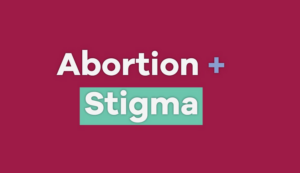Facing an abortion can be an emotionally challenging experience for individuals. The decision-making process, coupled with societal stigmas and personal beliefs, can contribute to a range of emotions. It’s crucial to recognize the importance of emotional well-being post-abortion and to implement effective coping mechanisms. In this article, we will explore various strategies to support individuals in navigating their emotions and fostering a healthy mental state after an abortion.
Understanding the Emotional Impact
Before delving into healing methods, it’s essential to understand the potential emotional impact of an abortion. Individuals may experience a spectrum of emotions, such as guilt, sadness, relief, or even a combination of conflicting feelings. Hormonal changes during and after the procedure can also contribute to mood swings. Acknowledging and accepting these emotions is the first step towards effective coping.
Seeking Professional Support
One of the most effective coping mechanisms post-abortion is seeking professional support. Therapists, counsellors, or support groups can provide a safe space for individuals to express their emotions, receive guidance, and work through the psychological aspects of their experience. Professional support helps individuals process their feelings and develop coping strategies tailored to their unique situation.
Open Communication with Partners or Loved Ones
Sharing emotions with a trusted partner, family member, or friend can be immensely therapeutic. Open communication fosters understanding and emotional support, reducing the sense of isolation that often accompanies post-abortion experiences. Partners, in particular, can play a crucial role in providing empathy and reassurance during this challenging time.
Self-Care Practices
Engaging in self-care activities is vital for emotional well-being post-abortion. This may include activities that promote relaxation, such as meditation, deep breathing exercises, or yoga. Adequate rest, a balanced diet, and regular physical activity contribute to overall well-being and can positively impact emotional health.
Journaling for Reflection
Journaling can be a powerful tool for self-reflection and emotional expression. Encouraging individuals to write down their thoughts and feelings provides an outlet for processing emotions. It also allows for tracking personal growth and identifying patterns or triggers that may impact emotional well-being.
Joining Supportive Communities
Participating in support communities or online forums where individuals share their experiences can create a sense of solidarity. Knowing that others have navigated similar emotions and challenges can be reassuring and empowering. These communities provide a platform for individuals to exchange coping strategies and insights.
Establishing Boundaries
Setting clear boundaries with oneself and others is crucial during the post-abortion period. This may involve limiting exposure to potentially triggering situations or conversations. Establishing boundaries helps create a safe space for emotional healing and minimizes external stressors that could exacerbate emotional distress.
Professional Guidance on Future Reproductive Choices
For individuals contemplating future reproductive choices, seeking professional guidance can be instrumental. Discussing options, concerns, and potential emotional impacts with a healthcare provider ensures informed decision-making and proactive emotional preparation.
Conclusion
Emotional well-being post-abortion is a complex and individualized journey. By recognizing the range of emotions, seeking professional support, engaging in self-care practices, and fostering open communication, individuals can navigate this challenging period with resilience. Implementing these coping mechanisms contributes to a healthier emotional state and facilitates the process of healing and moving forward. Remember, each person’s experience is unique, and there is no one-size-fits-all solution, but a combination of these coping strategies can offer holistic support.














